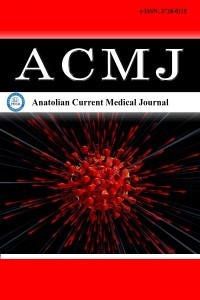1. <ol>
<li style="margin-left: 18pt;">
Schroeder HK, Nunes JC, Madeira L, et al. Postsurgical infection after myelomeningocele repair: a multivariate analysis of 60 consecutive cases. Clin Neurol Neurosurg. 2012;114(7):981-985.
<li style="margin-left: 18pt;">
Liptak GS, Dosa NP. Myelomeningocele. Pediatr Rev. 2010;31(11):443-450.
<li style="margin-left: 18pt;">
Sarifakioglu N, Bingül F, Terzioglu A, et al. Bilateral split latissimus dorsi V-Y flaps for closure of large thoracolumbar meningomyelocele defects. Br J Plast Surg. 2003;56(3):303-306.
<li style="margin-left: 18pt;">
Blanco-Dávila F, Luce EA. Current considerations for myelomeningocele repair. J Craniofac Surg. 2000;11(5):500-508.
<li style="margin-left: 18pt;">
Turhan Haktanir N, Eser O, Demir Y, et al. Repair of wide myelomeningocele defects with the bilateral fasciocutaneous flap method. Turk Neurosurg. 2008;18(3):311-315.
<li style="margin-left: 18pt;">
Atik B, Tan O, Kiymaz N, et al. Bilobed fasciocutaneous flap closure of large meningomyeloceles. Ann Plast Surg. 2006;56(5):562-564.
<li style="margin-left: 18pt;">
Kemaloğlu CA, Özyazgan İ, Ünverdi Ö F. A decision-making guide for the closure of myelomeningocele skin defects with or without primary repair. J Neurosurg Pediatr. 2016;18(2):187-191.
<li style="margin-left: 18pt;">
Mutaf M, Bekerecioğlu M, Erkutlu I, et al. A new technique for closure of large meningomyelocele defects. Ann Plast Surg. 2007;59(5):538-543.
<li style="margin-left: 18pt;">
Kankaya Y, Sungur N, Aslan Ö, et al. Alternative method for the reconstruction of meningomyelocele defects: V-Y rotation and advancement flap. J Neurosurg Pediatr. 2015;15(5):467-474.
<li style="margin-left: 18pt;">
Jabaiti S, Al-Zaben KR, Saleh Q, et al. Fasciocutaneous Flap Reconstruction after Repair of Meningomyelocele: Technique and Outcome. Pediatr Neurosurg. 2015;50(6):344-349.
<li style="margin-left: 18pt;">
McCraw JB, Penix JO, Baker JW. Repair of major defects of the chest wall and spine with the latissimus dorsi myocutaneous flap. Plast Reconstr Surg. 1978;62(2):197-206.
<li style="margin-left: 18pt;">
Sura Anitha ME, J P Varnika, Subodh Kumar Arige, Baliram Chikte,B K Lakshmi. Our Experience with Different Skin Closure Techniques in Meningomyeloceles. Int J Sci Stud. 2020;8(6):63-70.
<li style="margin-left: 18pt;">
Sharma MK, Kumar N, Jha MK, et al. Experience with various reconstructive techniques for meningomyelocele defect closure in India. JPRAS Open. 2019;21:75-85.
<li style="margin-left: 18pt;">
Shim JH, Hwang NH, Yoon ES, et al. Closure of Myelomeningocele Defects Using a Limberg Flap or Direct Repair. Arch Plast Surg. 2016;43(1):26-31.
<li style="margin-left: 18pt;">
Rodrigues AB, Krebs VL, Matushita H, et al. Short-term prognostic factors in myelomeningocele patients. Childs Nerv Syst. 2016;32(4):675-680.
<li style="margin-left: 18pt;">
Attenello FJ, Tuchman A, Christian EA, et al. Infection rate correlated with time to repair of open neural tube defects (myelomeningoceles): an institutional and national study. Childs Nerv Syst. 2016;32(9):1675-1681.
<li style="margin-left: 18pt;">
Kobraei EM, Ricci JA, Vasconez HC, et al. A comparison of techniques for myelomeningocele defect closure in the neonatal period. Childs Nerv Syst. 2014;30(9):1535-1541.
<li style="margin-left: 18pt;">
Luce EA, Walsh J. Wound closure of the myelomeningocoele defect. Plast Reconstr Surg. 1985;75(3):389-393.
<li style="margin-left: 18pt;">
Mangels KJ, Tulipan N, Bruner JP, et al. Use of bipedicular advancement flaps for intrauterine closure of myeloschisis. Pediatr Neurosurg. 2000;32(1):52-56.

